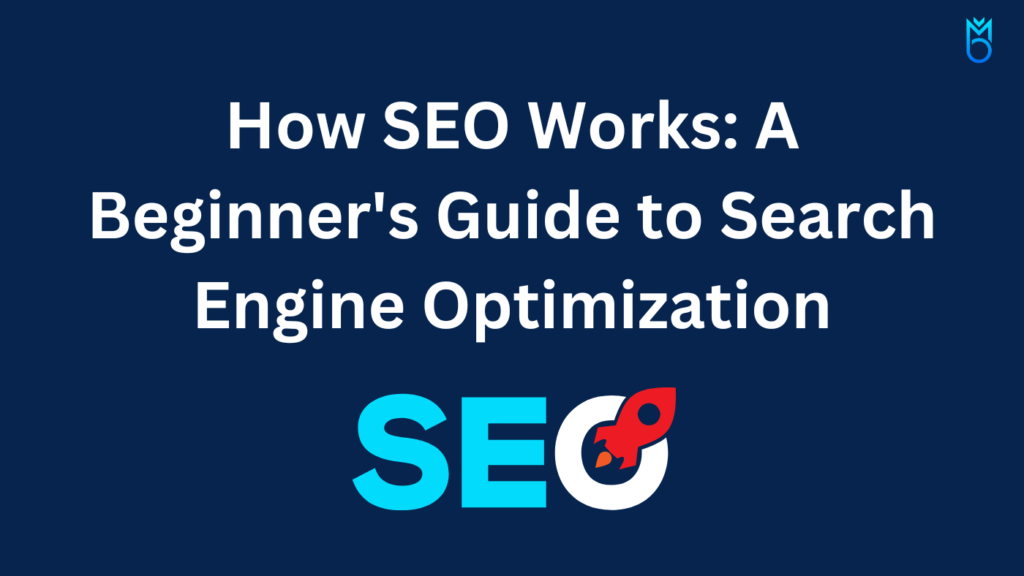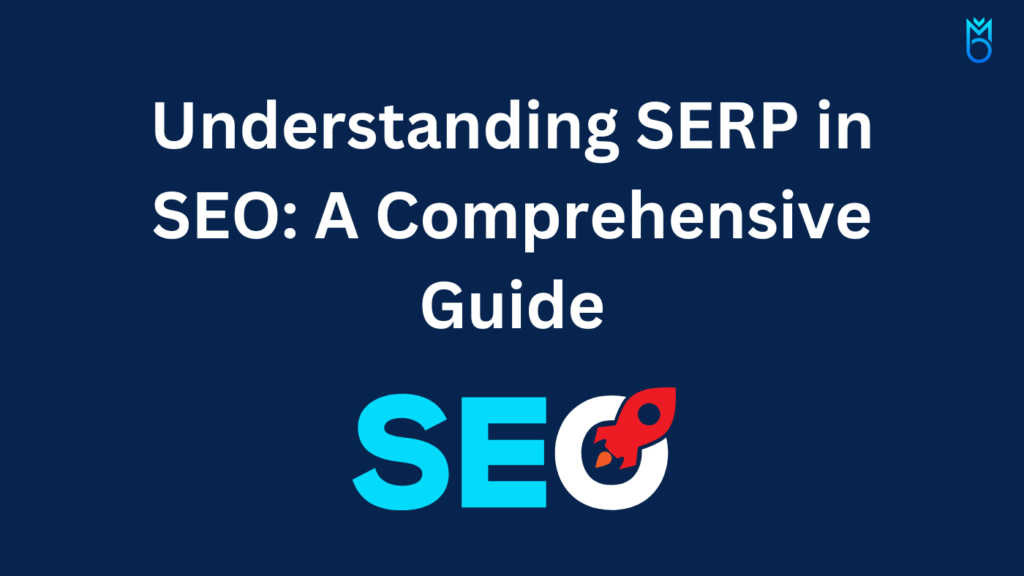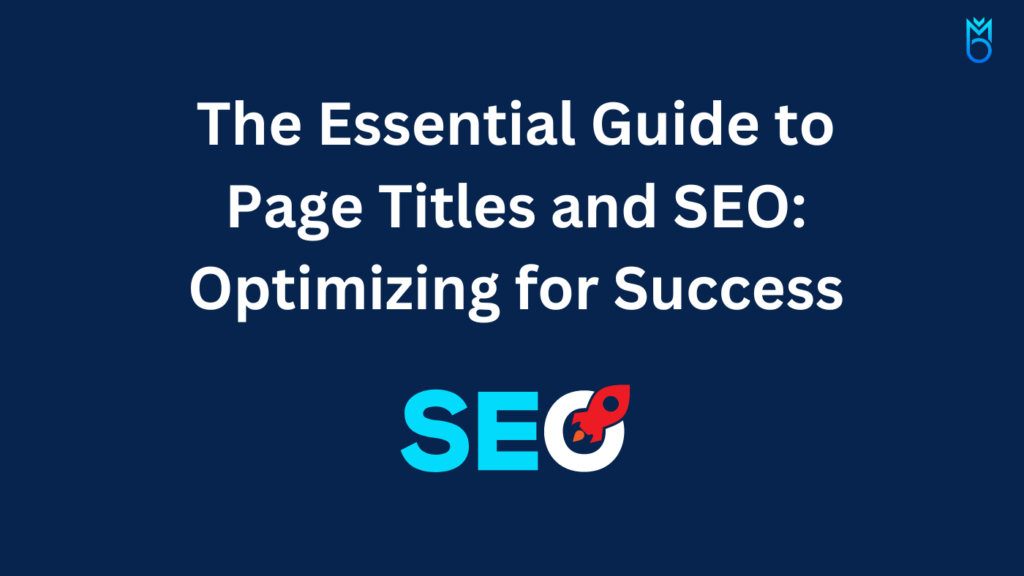Search Engine Optimization, commonly known as SEO, is the art and science of positioning your content on search engines like Google. At its core, SEO is about enhancing the quality and volume of web traffic to a website or a web page. The goal of SEO is to increase organic traffic, which is both free and can be highly targeted, by improving visibility to users of a web search engine.
SEO tactics are rooted in understanding how search engines work, what people are searching for, and why and how they are searching. This knowledge forms the basis for creating and optimizing content that is both relevant and accessible.
How SEO Works:
Understanding SEO requires understanding search engines’ essential functions: crawling, indexing, and ranking. Each search engine uses complex algorithms to deliver the most relevant results to users’ queries.
Effective SEO involves a multifaceted approach, focusing on keyword research, high-quality content creation, and ensuring that technical website elements are optimized for search engine algorithms. Developing robust SEO strategies involves continual learning and adaptation to the ever-evolving landscape of internet search and user behaviours.
Key Takeaways:
- SEO enhances visibility on search engines to drive organic traffic.
- Successful SEO combines keyword research, content creation, and technical website optimization.
- A strategic and informed approach to SEO can significantly improve web search rankings.
Understanding SEO Fundamentals:
When you embark on the journey of Search Engine Optimization (SEO), you align your website with the best practices that enable a higher ranking in search engine results. SEO involves thoroughly understanding and implementing various strategies that work cohesively to improve your site’s visibility.
SEO Basics
- Keywords: Research to find what your target audience is searching for.
- Content: Create quality, relevant, and informative content that caters to these keywords.
- On-Page SEO: Ensure your site’s structure and HTML elements are optimized for search engines.
Types of SEO
- On-Page SEO: It focuses on optimizing parts of your website that are within your control.
- Off-page SEO involves link building and social media marketing from your website.
- Technical SEO: It addresses the technical aspects like site speed, mobile-friendliness, and indexing that help search engine spiders crawl and index your site more effectively.
Best Practices To start, ensure your website has a clear structure, is intuitively navigable, and is mobile-friendly. Pay special attention to meta tags, URLs, and internal linking.
- Remember, SEO is not a one-time setup but a continuous testing, measuring, and refining process. It’s important because it makes your website more visible, which means more traffic and opportunities to convert prospects into customers. Keep your knowledge of SEO’s constantly evolving landscape current by staying informed about the latest industry trends and algorithm updates.
Core Components of SEO:
Search Engine Optimization (SEO) is your key to increasing visibility in search engines. It revolves around three main components:
- Technical SEO: Optimizes your website’s infrastructure to ensure search engines can efficiently crawl and index your content. Factors include website architecture, mobile-friendliness, and security. Simplify your site’s navigation and eliminate any crawl errors to make your site appealing to search engines.
- On-page SEO is about making your site’s content relevant to user queries. Elements of on-page optimization include quality content, targeted keywords, and proper use of titles and meta descriptions. You aim to ensure that every page on your site is an entry point for visitors. Use internal linking to guide search engines and users to your most important pages.
- Off-page optimization focuses on external signals and influencers of your site’s authority, primarily through backlinks. By getting other reputable sites to link to your content, you can increase your site’s trustworthiness in the eyes of search engines. Off-page SEO also includes social media marketing and influencer outreach.
By integrating these core components, you create a cohesive SEO strategy that helps improve your website’s visibility and ranking within search engine results pages. Your aim should be to provide an optimal user experience, from loading speed to high-quality content—attributes that search engines reward with higher rankings.
How Search Engines Work:
Search engines are the librarians of the internet, equipped with sophisticated processes to find, organize, and deliver information that meets your search queries. Their operation can be distilled into three fundamental steps: crawling, indexing, and ranking.
First, search engines use bots, also known as crawlers or spiders, to navigate the web. These bots scan every accessible webpage, reviewing and analyzing the code and the content.
During the indexing phase, search engines classify and store the content found. Think of this as a massive library catalogue where various factors like keywords, content freshness, and site structure categorize each webpage.
Lastly comes the ranking process. When you search, search engines sort through the indexed pages to determine which ones are most relevant to your query. They use complex algorithms that consider factors like:
- Keyword relevance
- Site authority
- User experience
- Page speed
A well-optimized page that aligns with these factors ranks higher in the search results. This operation is crucial for search engine optimization (SEO), which aims to improve your site’s visibility in search results.
By understanding how search engines work, you can better tailor your website to meet the intricacies of these digital systems, thus enhancing your content’s accessibility to users.
Keyword Research and Its Importance
When you delve into the SEO world, keyword research is fundamental. It’s the backbone of your strategy, determining the direction of your content and helping you grasp what your audience is searching for online.
To conduct adequate keyword research, start with seed keywords. These basic terms related to your niche describe your products or services. Seed keywords help identify your primary competitors and understand your market landscape.
Knowing the right keywords is crucial because they:
- Impact your visibility on search engines.
- Influence the traffic to your website.
- It affects how well your website aligns with user intent.
To begin, brainstorm a list of potential keywords. Tools like Google’s Keyword Planner are invaluable here, offering data on search volumes and helping you refine your list. Additionally, confirm keyword relevance through services like Google Trends.
Remember, keyword research isn’t just about popularity; it’s about relevance and intent. High search volume doesn’t always equate to high relevance. Learn why people are searching using specific keywords. This will guide you in creating content that satisfies user queries.
Stay informed about the importance of keywords for tailored content that connects with your audience at the right moment—especially when they’re ready to convert. Visit Moz for more insights on the importance of keywords in SEO.
Content Optimization Strategies
When optimizing your content, list keywords relevant to your topic. These keywords should align with what your target audience is searching for. Tools like Google Ads Keyword Planner can help you identify these terms.
Next, analyze Google’s first page for these terms to understand what type of content ranks well. By studying the top-performing pages, you can identify gaps and opportunities in your content.
Competitor analysis is crucial. When you identify your competitors, pay attention to their content strategy. Look at aspects such as:
- Headlines and titles
- The structure of their content
- Visual elements they use
Your aim should not be to copy but to create something different or better. This could mean more in-depth explanations, precise graphics, or up-to-date information.
Optimization extends beyond just the content itself; it involves the technical aspects too, such as:
- URLs: Keep them short and keyword-rich.
- Meta tags: Title tags and meta descriptions should be informative but concise.
- Alt text for images: Ensure images contribute to SEO with relevant keywords.
Remember to also optimize your content for search intent by answering the questions that users will likely have when searching for your keywords.
Finally, regularly update your content to keep it fresh and relevant. Search engines prioritize up-to-date information, and so should you.
Using these strategies gives your content a better chance of reaching a wider audience organically.
Building Quality Backlinks:
Building quality backlinks is a crucial strategy to enhance your website’s SEO performance. You want other reputable websites to link back to your content, signalling to search engines that your site is a valuable resource.
Start with Great Content: This can be ‘Skyscraper‘ material or comprehensive guides that position you as an authority.
Engage in Guest Blogging: Identify opportunities where you can provide valuable insights and include a link back to your site. These contributions must be on relevant and respected websites.
Outreach is Key: Connect with bloggers and reporters by becoming a source for them. If you provide valuable insights or data, they will likely link back to your content.
Monitor Your Brand: Look for mentions of your brand online. If you find a mention without a link, ask for one to be included.
Remember to maintain ethical SEO practices – focus on earning backlinks naturally rather than buying them. Your backlink profile should grow as your content becomes more recognized and shared, contributing to your website’s credibility and search engine ranking.
Technical SEO Best Practices:
When optimizing your website, focusing on technical SEO is crucial. It ensures search engines can crawl and index your content effectively.
- Site Speed: Users expect fast-loading pages. Optimize images, use caching, and minify code to cut down load times. Tools like Google PageSpeed Insights can guide your improvements.
- Mobile-Friendliness: With mobile traffic increasing, ensure your site is responsive. Google’s Mobile-Friendly Test helps you identify areas that need attention.
- SSL Certification: Secure your site with HTTPS. It encrypts data and is considered a ranking signal by Google.
- XML Sitemap: Create and submit an XML sitemap to search engines. This roadmap helps them discover all your pages.
- Robots.txt File: Use a robots.txt file to control search engine crawlers. Be careful not to block important content accidentally.
- Structured Data: Implement structured data (like schema.org) to enhance your listings in SERPs with rich snippets.
- 404 Errors: Regularly check for broken links and resolve any 404 errors. This improves user experience and crawl efficiency.
- Canonical Tags: Prevent duplicate content issues by properly using canonical tags, pointing to the original content version.
Keep updated with the latest SEO best practices and algorithm changes to maintain and improve your site’s visibility.
SEO Analytics and Measurement:
Analyzing your SEO efforts is crucial to understanding how your website performs in search engine results. SEO analytics involve tracking various metrics that reflect your site’s health and ability to attract organic traffic.
Firstly, you’ll want to monitor your organic traffic, which indicates the number of visitors coming to your site from search engines. To effectively gauge your SEO strategy’s success, you should also track the click-through rate (CTR), revealing how often people who see your listing in search results decide to click on it.
Key performance indicators (KPIs) for SEO include:
- Average ranking for your targeted keywords
- Impressions in search results
- Domain authority, which hints at your website’s trust and quality
- Referring domains and backlinks pointing to your site
You can make informed decisions to improve your SEO strategy by monitoring these metrics. Tools and platforms such as Google Analytics offer a comprehensive view to analyze your site’s SEO performance.
To further support your primary SEO goal, consider evaluating additional benchmarks. For example, engagement metrics like bounce rate and session duration help you understand user behaviour on your site. Details on how to measure these can be found in guides like Measuring & Tracking SEO Success.
Remember, these analytics are not just numbers but insights that can help direct your SEO efforts toward areas that need improvement for better rankings and higher traffic.
Future of SEO:
The SEO landscape is continually evolving, and staying informed about the upcoming trends is crucial for your online success. Integrating AI and machine learning into search engines allows you to expect a more sophisticated understanding of user intent, delivering more pertinent results to search queries. Embrace practices prioritizing user experience and ethical SEO to be best positioned for future changes.
Trends to watch:
- Artificial Intelligence: AI’s role in refining algorithms will shape how you optimize content. AI-driven SEO strategies are expected to become a standard.
- User Experience (UX): Google emphasizes the importance of UX, pushing you to ensure your website is user-friendly and easily navigable.
- Technical Advancements: With technical SEO becoming more complex, understanding the mechanics behind search engines is more vital than ever.
- Collaborative Optimization: Integrating your SEO with other disciplines is becoming increasingly important. This means you’ll work more collaboratively across marketing and web development teams to optimize websites.
- Local SEO: A complete and current Google Business Profile becomes indispensable in boosting your visibility for location-based searches. This trend emphasizes the need for a robust local SEO strategy.
- Voice Search: As the usage of voice assistants grows, so does voice search optimization – preparing for natural language queries is vital.
You can maintain and improve your online visibility in a changing digital landscape by keeping yourself updated and adapting to these trends.
Frequently Asked Questions:
What is SEO?
SEO, which stands for Search Engine Optimization, is a strategic approach to enhance the visibility of your website in search engine results. When you optimize your site, you’re essentially making it more attractive and more accessible to search engines like Google.
Types of SEO?
SEO, or Search Engine Optimization, is a multifaceted strategy to increase your website’s visibility in search engine results. Understanding the different types of SEO is critical for your website’s success. Here’s what you need to know.
- On-Page SEO: This involves optimizing individual web pages to rank higher. To excel in on-page SEO, focus on your content quality, keyword placement, and HTML tags such as title, meta, and header tags.
- Off-Page SEO: This is all about actions taken outside your website to affect your rankings within search engine results pages. Building high-quality backlinks from reputable sources is a primary activity of off-page SEO. Effective strategies here can improve your site’s trustworthiness and authority.
- Technical SEO: Technical SEO concerns itself with your site’s overall structure and foundation. Ensure that search engines can easily crawl and index your website by improving site speed and mobile-friendliness and implementing structured data.
- Local SEO: Local SEO is crucial if you’re targeting a local audience. It involves optimizing your site for local search queries and includes tactics like managing your Google My Business listing and local citations.
Why is SEO Important?
SEO, or Search Engine Optimization, is crucial for the visibility of your website in search engine results. When you optimize your site, you’re making it easier for search engines to understand and rank your content, which can lead to higher visibility.
- Increased Organic Traffic: Being visible in search results can significantly increase the traffic to your site. Organic search is a primary source of web traffic, making SEO a vital tool for reaching your audience.
- Targeted Reach: SEO helps you attract a targeted audience. By focusing on keywords related to your products or services, you can attract visitors who are more likely to be interested in your offer.
- Credibility and Trust: Websites that appear higher in search results are often considered more trustworthy and credible. By optimizing your site for SEO, you’re also working on improving user trust.
- Cost-Effectiveness: Compared to paid advertising, SEO requires less financial investment over time. Initially, you may invest in research and content creation, but unlike ads, you don’t pay for each click on your site.
- Competitive Advantage: If your competitors rank higher than you, they can capture your prospective customers. A good SEO strategy can help you outpace the competition by ensuring your website is more visible than theirs for similar search queries.
Remember, SEO is a continuous process. The algorithms used by search engines evolve, so you should regularly review and update your SEO strategy to maintain and improve your rankings.
Is SEO Difficult?
SEO, or search engine optimization, can seem daunting due to its complexity and the ever-evolving nature of search engine algorithms. However, understanding the basics is within your reach if you’re willing to invest time and effort.
- Technical SEO involves optimizing your website’s structure, requiring technical know-how. Although it might seem challenging at first, there are ample resources and tools to guide you.
- Content Creation: Crafting quality content that aligns with SEO best practices is critical. It demands consistency, an understanding of what your audience seeks, and keyword research.
Here are some key factors to manage in SEO:
SEO isn’t inherently complex; it’s learning and adapting. You don’t have to be an expert from the start. As highlighted by Forbes, SEO’s difficulty is good, as it rewards effort and strategy, leading to more sustainable and worthy results over time. Persistence and continuous learning are your greatest assets in mastering SEO.
How does SEO work?
Search Engine Optimization (SEO) is a strategic process to increase a website’s visibility in search engine results pages (SERPs). You can leverage different tactics to enhance your online presence when you understand how SEO works.
Firstly, keywords play a central role in SEO. They are the terms and phrases that individuals input into search engines when looking for information. By carefully selecting and integrating these words into your website content, you improve your chances of matching these search queries.
Another crucial aspect is on-page SEO, which involves optimizing individual web pages to rank higher. This includes:
- High-quality, relevant content
- Title tags with keywords
- Meta descriptions that entice clicks
- Proper use of headers and subheaders
- Image alt attributes
Off-page SEO covers activities outside your website to improve your site’s trustworthiness and authority. These mainly consist of backlinks, which are links from other reputable sites pointing back to yours. High-quality backlinks can significantly boost your SEO efforts.
Additionally, technical SEO is about enhancing the technical aspects of your website to improve the rankings. These elements include:
- A secure connection via HTTPS
- A mobile-friendly website design
- Fast page loading times
- A clear URL structure
- Sitemaps and robots.txt files to guide search engines
Remember, SEO requires continuous effort. Search engine algorithms frequently update, so staying informed ensures you adapt strategies efficiently and maintain or improve your search rankings.
Conclusion:
To effectively utilize SEO, you must understand its components and their functions. Remember, SEO is an ongoing process, not a one-time setup. You should continually monitor and adjust your strategies to stay competitive in search engine rankings.
Your SEO efforts should include the following:
- High-quality content: Ensure your website has informative and valuable content that addresses the needs of your audience.
- Keywords: Integrate relevant keywords naturally into your content to increase visibility.
- Backlinks: Strive for quality backlinks from reputable sites to boost credibility.
- User experience: Optimize your site’s navigation and speed to improve user satisfaction.
Stay updated with SEO best practices by referring to reliable sources like Search Engine Journal, which offers insights for beginners. For comprehensive knowledge, consult Moz’s SEO guidelines, a trusted resource in the industry.
Additionally, if you want to understand SEO’s impact on your content’s conclusory sections, consider insights from Yoast, which details the significance of solid conclusions for SEO.
Applying these principles diligently will increase the likelihood of ranking higher in search results, thus driving more organic traffic to your site. Keep learning and adapting because the digital landscape is constantly evolving.

Redoan Kawsar is a digital marketer and SEO expert dedicated to helping businesses thrive in the digital world. He is the founder and CEO of MentorsBoss.com and provides a variety of digital solutions, including social media management, website development, local SEO, niche site creation, and lead generation. With his expertise and team, he can enhance your online presence and achieve impactful results for your business.


